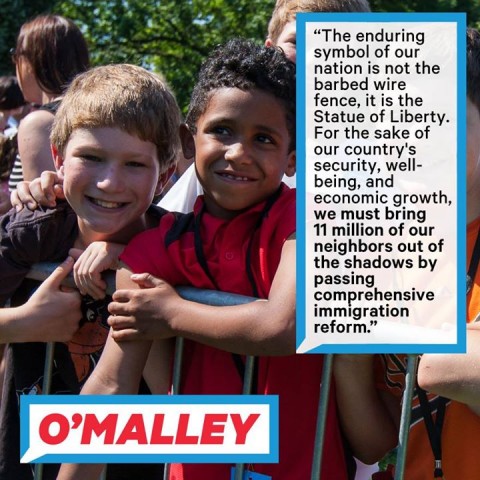There are a lot of my friends who are deriving a certain amount of schadenfreude over the fact Martin O’Malley was heckled off the stage at the Netroots Nation conference yesterday, as was fellow Democratic presidential hopeful Bernie Sanders.
But I want to concentrate on what O’Malley reportedly said in response at the start of the interruption: “I know, I know…Let me talk a little bit…Black lives matter, white lives matter, all lives matter.” For that, he was shouted down and unable to continue.
I’ll set aside the complete lack of tolerance once again shown by the “tolerant” far left and say that I agree with O’Malley on the last part: all lives do matter. But I’m sure that if you asked the vast majority of O’Malley backers – or even Martin O’Malley himself – about the lives of the unborn, he would immediately change his tune. This is the problem; not only with the Left but with a fair number in the center and a troubling and increasing number on the Right.
It turns out that, as editor of this website, I know exactly what my cohort Cathy Keim is going to write about and tomorrow she will be sharing her thoughts on abortion and the Planned Parenthood situation. (Trust me, you will like what she has to say. I almost ran it today but know that my audience is larger on weekdays and the piece deserves a wider reading.) It’s no secret where we stand on the subject, though.
And it’s even more ironic that the same people who thundered and carried on about #blacklivesmatter are aborting themselves at a far higher rate than the population at large. Do the lives only matter when they are outside the womb?
Just the other day a young couple we know from being at their wedding in January of last year had their first child. I’m sure if you asked them when his life began to matter, they would have said that it became paramount the moment they discovered she was pregnant with him. Maybe they weren’t in the greatest financial situation and their lives will never be perfectly settled as long as the young father serves in the military, but they were understandably excited with the role they would be taking on.
A quote from the Guardian story shows the mentality of the Left. This is MoveOn executive director Anna Galland:
The presidential candidates’ responses today to the powerful protest led by black activists at Netroots Nation … make clear that all Democratic candidates have work to do in understanding and addressing the movement for black lives.
Saying that ‘all lives matter’ or ‘white lives matter’ immediately after saying ‘black lives matter’ minimizes and draws attention away from the specific, distinct ways in which black lives have been devalued by our society and in which black people have been subject to state and other violence.
Do you mean devalued as in receiving an oversize proportion of abortions? Sounds like the extension of your desire of having “choice” to me.
But even more so, it begs a question about how black lives specifically have been “devalued”: presuming this goes back to the days of slavery, what would be considered paying off the debt my great-great-great-great grandparents (and I think I’m recalling the family tree right; there may be another great- missing) supposedly incurred to black people for enslaving them? That is if my ancestors ever held black slaves and I think back in that era they were still in Germany and what is now Poland, so I doubt it.
Obviously that question is rhetorical because no amount would ever satisfy the minds of those who choose to make themselves victims.
In short, all lives matter but it’s the choices we make that determine how much they matter. Those at Netroots seem to want government to determine what constitutes mattering and allow them, through the power of coercing those who made correct choices, to receive atonement for their incorrect selections in life – many of which involved turning their back on God to one extent or another.
Martin O’Malley and Bernie Sanders may be church-going men, but that which they allow to happen in the name of compassion makes me wonder what they’re being told from the pulpit.



